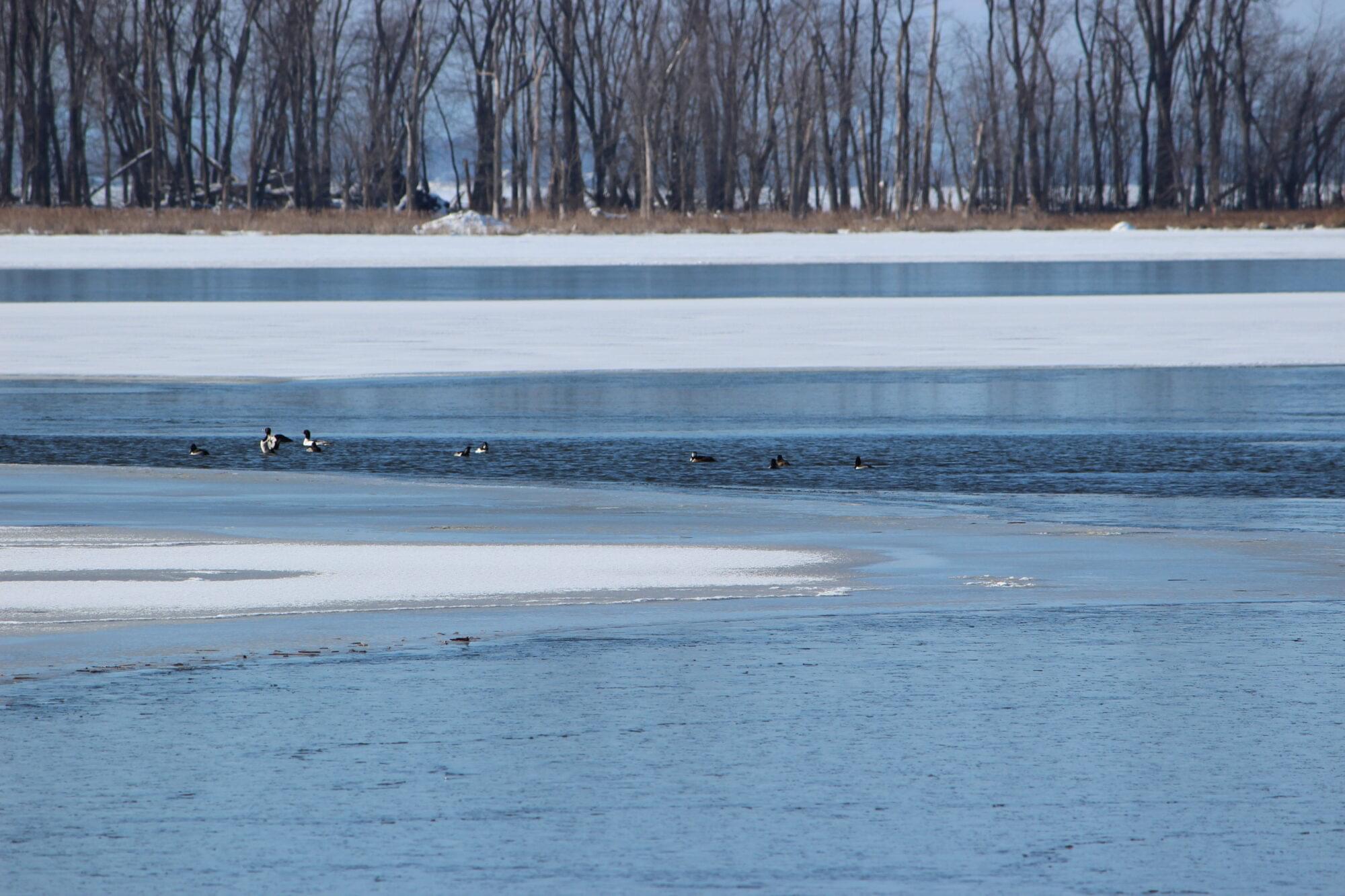Q: What is lake turnover and when does it happen?
A: Each year in fall and spring, Lake Champlain and the air above it engage in a thermodynamic duet that results in the lake “turning over,” or mixing—a process both fascinating and ecologically significant.
Throughout the warm summer months, Lake Champlain maintains two distinct layers: cool, dense, deoxygenated water below; and warm, less dense, more oxygenated water above. Imagine treading water in a calm pond: close to the surface your arms feel warm, while below your toes seem to skim a pool of much cooler water. During the summer Lake Champlain is similarly stratified, though at a much larger scale.

As summer wanes and fall begins, surface waters are no longer absorbing heat from the air above. Instead, the top layer of the lake releases heat and becomes denser. Gradually, water at all depths begins to approach the same temperature: 39 degrees Fahrenheit.
At and below 39 degrees, water begins to break its own thermodynamic rules. As it cools, it becomes less dense. Instead of warm water rising to the surface of the lake, cool water rises to the surface. As it approaches the freezing point, we see ice begin to float on the surface of the lake.
If water were a better rule-follower, the biological nature of Lake Champlain—and lakes in all cold-weather regions—the biology of our watershed would look very different. As Breck Bowden, Program Director at Lake Champlain Sea Grant, told Vermont Public, “If it weren’t for that peculiarity in water [turnover] which we see in no other natural substance, lakes would freeze from the bottom, or they’d freeze solid, and life on Earth would be completely different.”
Lake turnover is aided by strong winds that blow across the surface of the lake, resulting in a small degree of “piling up” of water at one end of the lake. Throughout this process, referred to as seiche, deoxygenated, lower water rises to the surface and oxygen levels begin to increase (good news for the aquatic life that depends on oxygenated water). A telltale sign of lake turnover is a murky appearance to the lake: sediments and nutrients from the lake bottom will become temporarily suspended throughout the water column.
As Lake Champlain freezes, it returns to its stratified, or layered, state. As we’ve learned, the surface layer is the coldest, with ice forming across much of the surface of the lake each winter.
In spring, the lake mixes again. Ice melts and the surface water warms to 39 degrees before sinking, bringing valuable dissolved oxygen with it. The lake reaches an even temperature for a short period of time, then solar energy begins warming the surface and the lake returns to its stratified state.
The average date of Lake Champlain’s winter turnover is December 19th. As climate change impacts seasonal temperature shifts, this date is likely to gradually move later and later into December.
In late December, be sure to pay attention to the lake. You’ll be able to see evidence of the turnover, one of many fascinating climatological processes that ensure livable conditions for species who call Lake Champlain home.
Source: Vermont Public, Lake Champlain Committee